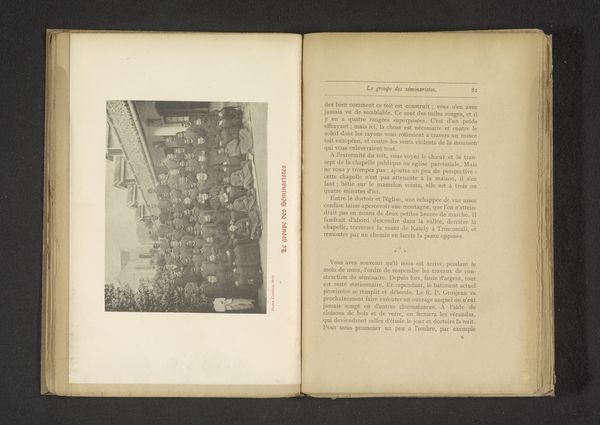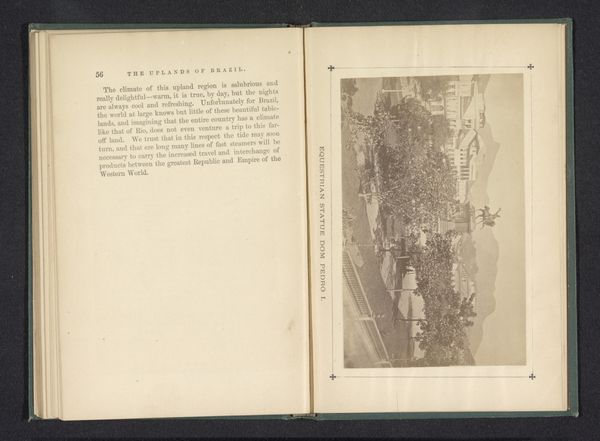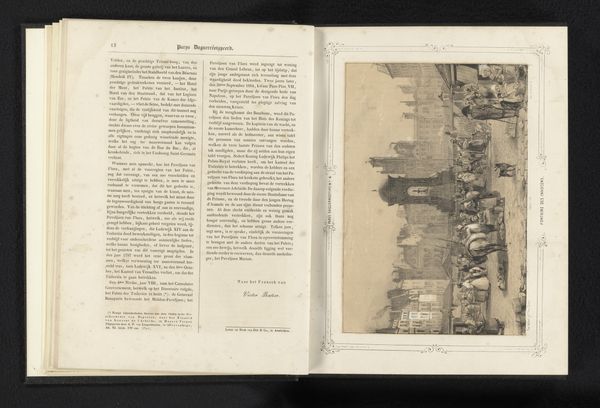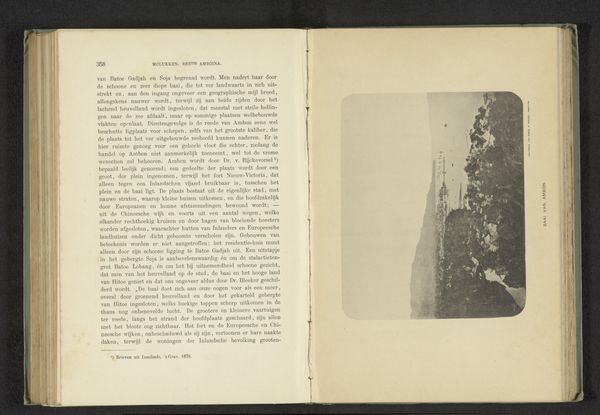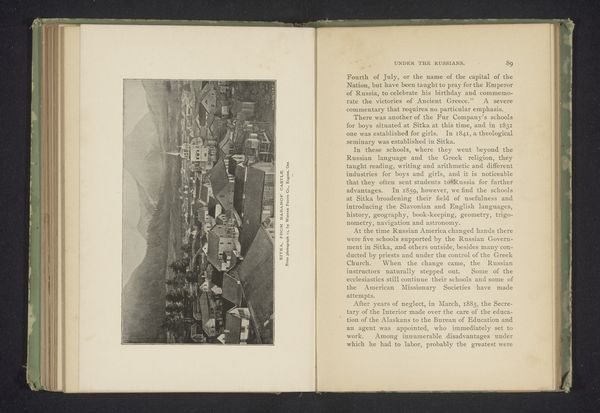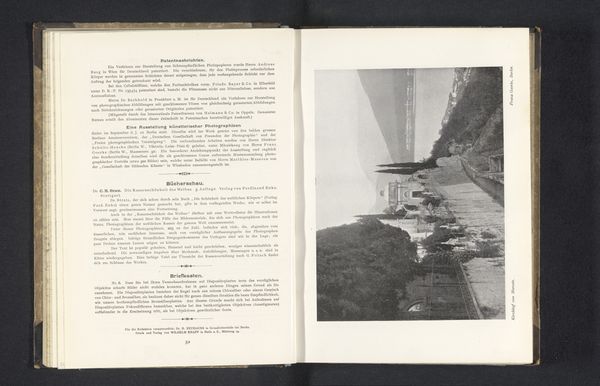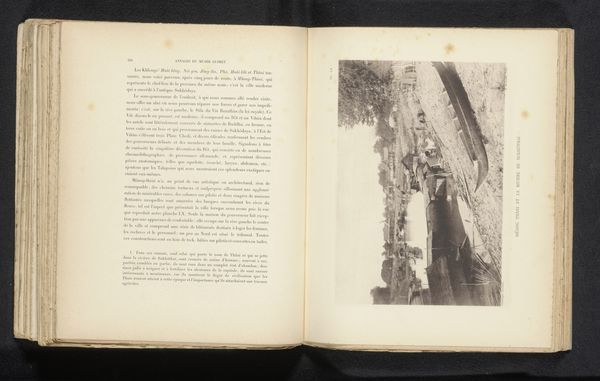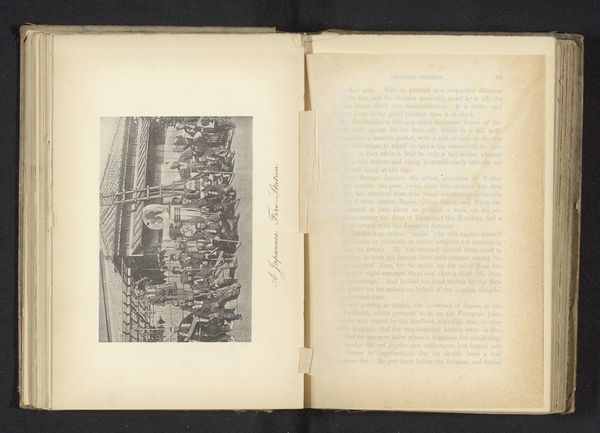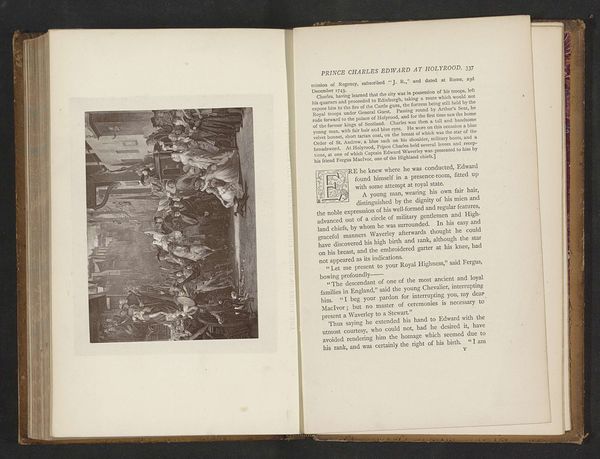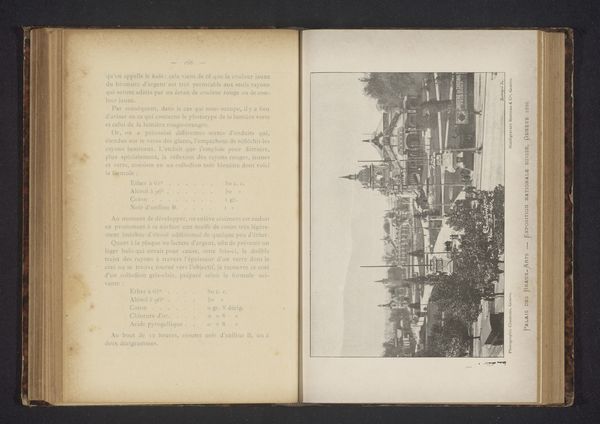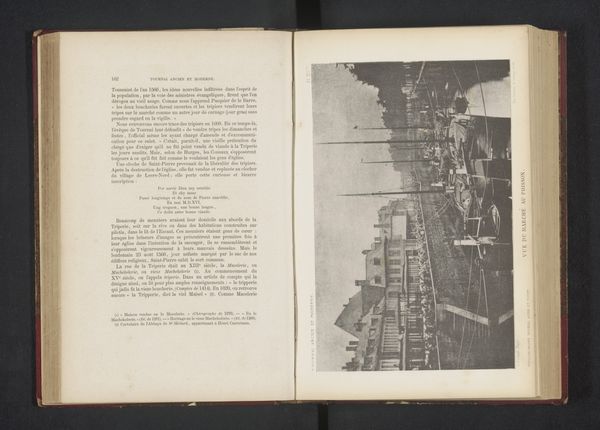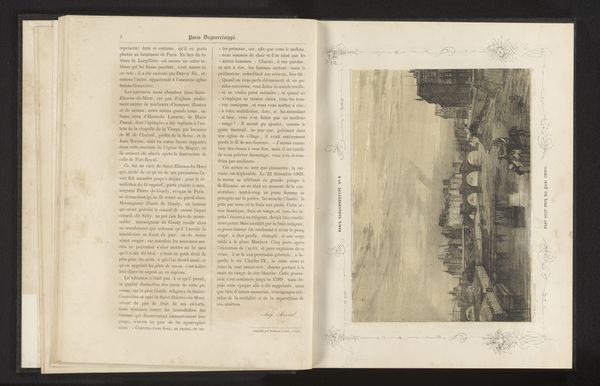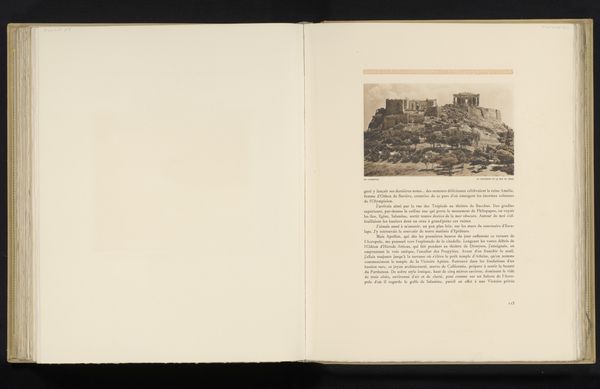
Dimensions: height 115 mm, width 170 mm
Copyright: Rijks Museum: Open Domain
Curator: Here we have a page from a photographic collection. It features a print titled "Gezicht op de Boulevard Montmartre in Parijs, Frankrijk," taken before 1896. The photograph captures the bustling cityscape. Editor: Immediately striking is the incredible detail and the slightly dizzying perspective. There’s something almost claustrophobic about the buildings leaning in. It gives the impression of constant motion. Curator: Yes, it embodies the Impressionist aesthetic, documenting everyday modern life through capturing transient moments. As photography became increasingly popular, it offered new ways of observing and representing the city, influencing other artistic movements. Editor: Looking at it through today's lens, this street scene highlights a certain segment of society at that time. It seems affluent and definitely suggests a predominantly white, upper-middle class existence in late 19th-century Paris. How does this artwork challenge or support traditional representations of Parisian life during that era? Curator: That's a really important consideration. Photography played a key role in both democratizing art and perpetuating social hierarchies. These images, displayed and collected in photographic societies, certainly catered to a particular audience, reinforcing bourgeois ideals and urban progress. Editor: I'm thinking about what the people in the photograph may have considered to be ordinary or mundane. What about the unseen labor that supported this lifestyle—the marginalized communities of workers, for instance? Were there avenues to explore more inclusive narratives? Curator: Precisely, looking at images such as this as social documents pushes us to question whose stories are being told. While it might not explicitly challenge established norms, its value is in revealing aspects of the era, its social makeup, and power structures. Editor: I’m so glad we were able to unpack this image a bit. This type of careful assessment is crucial to making sense of art from any time period. Curator: I concur entirely. Historical perspectives like this are necessary to enrich our understanding of art’s lasting value.
Comments
No comments
Be the first to comment and join the conversation on the ultimate creative platform.
